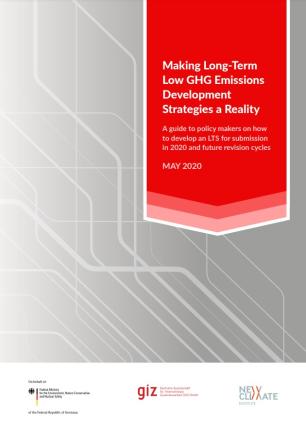This guidance provides recommendations to policy makers on how to approach the development of a long-term low greenhouse gas emission development strategy (LTS) given the unique circumstances of individual countries in 2020, and future revisions thereof.
The LTS should be an ongoing exercise in creating a vision for the future of a low emissions economy informed by the latest science and integrated into a continuous planning process expanding beyond 2020. This long-term vision should be harmonised with future NDC revision cycles to ensure consistency and help drive action in the short term.
To account for country-specific circumstances and starting points, the development of an LTS can be guided by three levels of comprehensiveness ranging from a base level to a detailed level. By making the LTS development an ongoing visioning exercise as part of a continuous planning process, policy makers can enhance the LTS’s scope, depth and robustness over time in subsequent revision rounds.
Building upon the concept of differentiated level of comprehensiveness emerging over time, the guidance identified eight key aspects of LTSs for consideration by policy makers and gives recommendations on how policy makers can address each aspect considering their country’s situation.

Reports and briefs
Making long-term low GHG emissions development strategies a reality: A guide to policy makers on how to develop an LTS for submission in 2020 and future revision cycles
Publisher: New Climate Institute and GIZ
Language: English